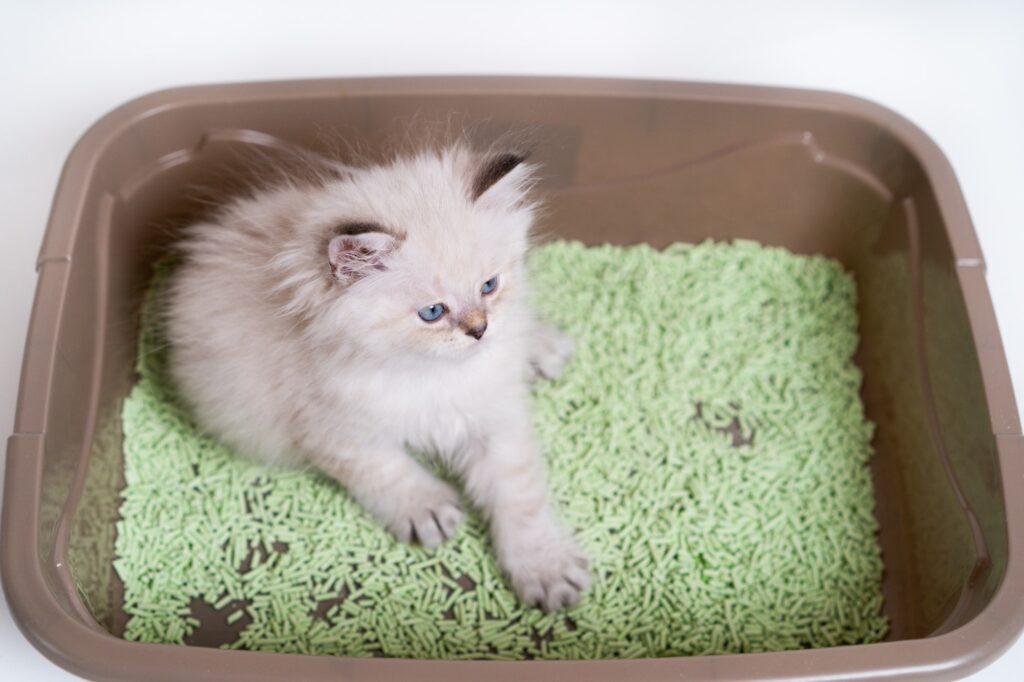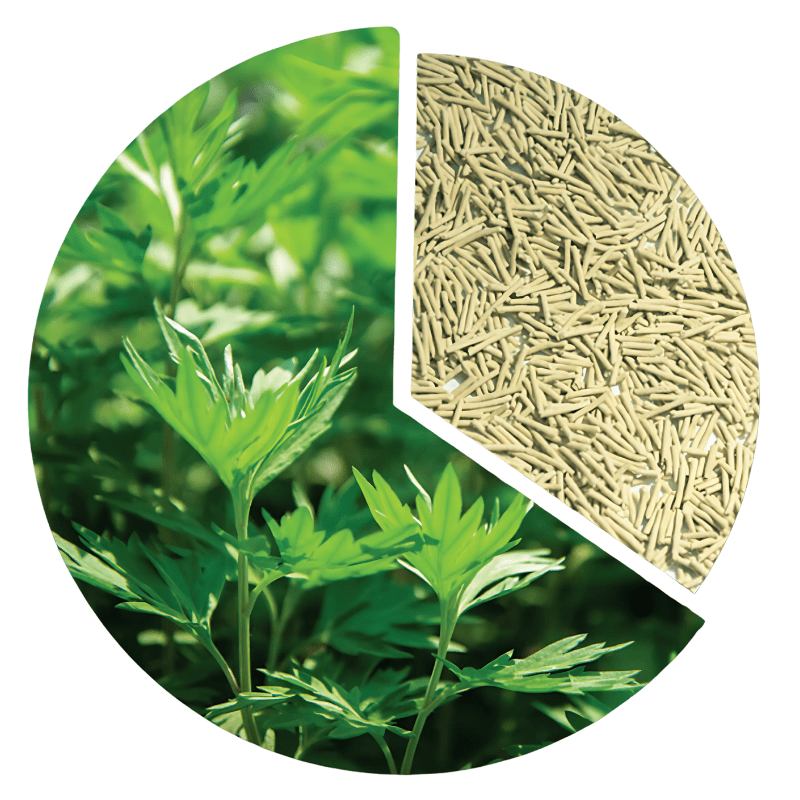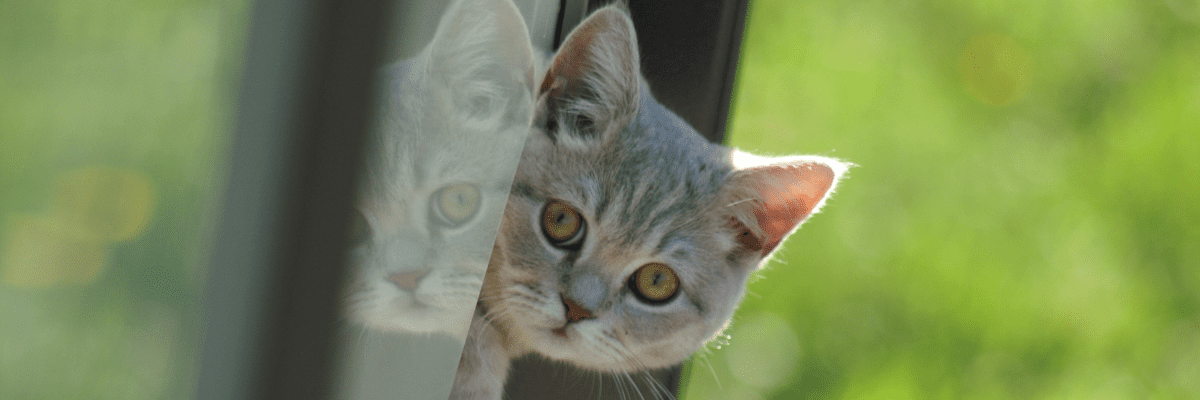In today’s environmentally conscious market, offering eco-friendly cat litter is not just a trend—it’s a necessity. As a wholesaler, selecting the right eco-friendly cat litter can set you apart from competitors, attract a loyal customer base, and contribute positively to the planet. This comprehensive guide will walk you through the essential factors to consider when choosing eco-friendly cat litter products for your inventory, ensuring you meet both your business goals and your customers’ needs.
Why Eco-Friendly Cat Litter Matters
Before diving into the selection process, it’s crucial to understand why eco-friendly cat litter is gaining popularity:
- Environmental Impact: Traditional clay-based litters often involve energy-intensive mining processes and produce significant dust and waste. Eco-friendly alternatives reduce environmental footprints.
- Health Benefits: Natural litters typically produce less dust and harmful chemicals, benefiting both cats and their owners.
- Sustainability: Products made from renewable resources contribute to long-term ecological balance.
- Market Demand: Consumers are increasingly seeking sustainable products, making eco-friendly cat litter a lucrative market segment.

Key Factors to Consider When Selecting Eco-Friendly Cat Litter
1. Material Composition
The foundation of any eco-friendly cat litter is its material composition. Here are the most common sustainable materials:
Plant-Based Materials
Plant-based litters, such as those made from corn, wheat, or soy, are biodegradable and renewable. They offer excellent clumping properties and are often flushable.
Biodegradable Clay Alternatives
Materials like bentonite-free clays or recycled paper are sustainable options that mimic the clumping ability of traditional clay litters without the environmental drawbacks.

Tofu Cat Litter
Made from soybean by-products, tofu cat litter is highly absorbent, biodegradable, and flushable. It also tends to produce minimal dust, making it a favorite among pet owners.
Wood-Based Litters
Pine, cedar, and other wood-based litters are naturally aromatic and absorbent. They decompose naturally, reducing landfill waste.
Choosing the right material depends on factors like absorbency, clumping ability, scent, and the specific preferences of your target market.
2. Clumping Efficiency
Clumping efficiency is a critical factor for both cats and their owners. High clumping efficiency ensures easy scooping and odor control, enhancing the user experience.
- Strength of Clumps: The litter should form strong clumps that don’t break apart easily, preventing tracking and making cleanup straightforward.
- Speed of Clumping: Faster clumping means quicker removal of waste, maintaining a fresher environment for the cat.
- Longevity: Effective clumping reduces the frequency of litter changes, offering cost savings and convenience for consumers.

Test the clumping performance of different products to ensure they meet high standards before adding them to your offerings.
3. Odor Control
Effective odor control is paramount in maintaining a pleasant environment. Look for litters with natural odor-neutralizing properties:
- Activated Charcoal: Known for its excellent odor-absorbing capabilities, it’s a popular additive in eco-friendly litters.
- Natural Fragrances: Essential oils from plants like lavender or citrus can provide a pleasant scent without the harsh chemicals found in artificial fragrances.
- Absorbent Materials: Materials like bamboo or coconut husk naturally trap and neutralize odors.
Ensure the litter you choose effectively controls odors without overpowering scents, catering to sensitive users.
4. Dust Production
Low dust production is essential for the health of both cats and their owners, preventing respiratory issues and minimizing mess.

- Dust-Free Claims: Verify that the litter is genuinely low in dust by reviewing product specifications and user reviews.
- Particle Size: Finer particles can reduce dust but may impact clumping. Balance is key.
- Packaging and Handling: Proper packaging can minimize dust during transport and storage.
Prioritize litters that maintain low dust levels while delivering other performance benefits.
5. Packaging Sustainability
Eco-conscious packaging reflects your commitment to sustainability and appeals to environmentally aware customers.
- Recyclable Materials: Choose packaging made from recyclable or biodegradable materials to reduce landfill waste.
- Minimalist Design: Less packaging means less waste. Opt for designs that use the minimum necessary materials without compromising product safety.
- Refill Options: Offering refill packs or bulk purchasing options can significantly cut down on packaging waste.
Evaluate the entire packaging lifecycle to ensure it aligns with sustainability goals.
6. Price Point and Value
While eco-friendly products often come at a premium, it’s essential to balance cost with quality and sustainability.
- Competitive Pricing: Analyze market prices to position your products competitively without sacrificing margins.
- Bulk Discounts: Offering discounts on large orders can attract wholesalers and retailers looking to maximize their profits.
- Per-Unit Cost: Ensure the per-unit cost remains attractive for both you and your customers, maintaining a balance between affordability and sustainability.

Provide value by highlighting the long-term benefits and cost savings of eco-friendly litters.
7. Brand Reputation and Certifications
A reputable brand with verified certifications can assure wholesalers and customers of product quality and sustainability.
- Certifications: Look for certifications like USDA Organic, FSC, or other relevant eco-labels that validate the product’s environmental claims.
- Customer Reviews: Positive reviews and testimonials can indicate reliability and performance.
- Transparency: Brands that are transparent about their sourcing, manufacturing processes, and sustainability efforts build trust with buyers.
Partner with brands that uphold high standards and can provide verifiable proof of their eco-friendly claims.
8. Customization and OEM/ODM Options
For wholesalers targeting specific markets or looking to create a unique brand identity, customization options can be a significant advantage.
- Private Labeling: Offering private labeling allows wholesalers to market the product under their own brand name.
- Customized Features: Providing options like specific scents, packaging designs, or unique materials can cater to niche markets.
- OEM/ODM Services: Original Equipment Manufacturer (OEM) and Original Design Manufacturer (ODM) services enable the creation of tailored products that meet specific customer needs.

Consider offering or seeking customizable options to differentiate your product offerings and cater to diverse customer preferences.
Top Eco-Friendly Cat Litter Materials and Their Benefits
Tofu Cat Litter
Tofu cat litter has emerged as a top choice due to its impressive absorbency and clumping ability. Derived from soybean by-products, it’s biodegradable and flushable, making disposal hassle-free. Additionally, tofu litter produces minimal dust and is free from harmful chemicals, ensuring a safe environment for both pets and owners.
Corn-Based Litter
Corn-based litters are another popular option, known for their natural clumping properties and excellent odor control. They are lightweight, making them easy to handle and transport. Corn litter is also biodegradable and compostable, reducing environmental impact.
Pine Pellet Litter
Pine pellet litters offer a natural, wood-based alternative that is highly absorbent and naturally aromatic. They break down easily, allowing for composting in some cases. Pine litters are dust-free and provide excellent odor control without the need for additional fragrances.
Recycled Paper Litter
Made from recycled paper, this type of litter is highly sustainable and biodegradable. It is non-clumping but excels in moisture absorption and odor control. Recycled paper litter is ideal for cats with sensitive paws and for owners seeking a lightweight, eco-friendly option.

Sustainable Packaging Solutions
Sustainable packaging not only reduces environmental impact but also enhances your brand’s image. Here are some innovative packaging solutions:
Biodegradable Packaging
Using biodegradable materials such as plant-based plastics or compostable paper ensures that the packaging breaks down naturally, minimizing waste.
Recycled Materials
Packaging made from recycled paper or cardboard reduces the demand for new raw materials and supports recycling industries.
Minimalist Packaging
Simplifying packaging designs to use fewer materials without compromising product safety can significantly reduce waste.
Reusable Containers
Offering reusable containers encourages customers to repurchase refills, promoting sustainability and customer loyalty.
Evaluating Clumping Efficiency: What to Look For
Clumping efficiency is a pivotal feature that affects both the ease of use and the cleanliness of the litter. When evaluating clumping efficiency, consider the following:
- Clump Strength: Ensure that the clumps remain intact and do not break apart easily, making scooping efficient and mess-free.
- Absorption Rate: High absorption rates mean better moisture control, leading to fewer odors and longer-lasting litter.
- Ease of Scooping: The litter should form smooth clumps that can be easily scooped without sticking to the scoop, enhancing the user experience.
Conduct thorough testing of various litters to assess their clumping performance under different conditions.

Packaging Sustainability: Making an Impact
Sustainable packaging is an extension of the product’s eco-friendly promise. Here’s how to evaluate packaging sustainability:
Material Sourcing
Choose packaging materials sourced from renewable or recycled resources. Verify certifications to ensure sustainability claims are legitimate.
Design Efficiency
Opt for designs that use the least amount of material necessary while still protecting the product. Innovative designs can minimize waste and reduce transportation costs.
Lifecycle Analysis
Consider the entire lifecycle of the packaging, from production to disposal. Choose options that have the lowest environmental impact throughout their lifecycle.
Collaborate with packaging suppliers who prioritize sustainability and can provide eco-friendly options tailored to your needs.
Real-Time Data Insights (As of October 2023)
While I cannot provide real-time data, trends up to October 2023 indicate a significant shift towards sustainable pet products. Sales of eco-friendly cat litter have grown by over 20% annually, driven by increased environmental awareness and consumer demand for healthier pet care options. Additionally, certifications and third-party verifications have become more crucial, with 65% of consumers prioritizing products with verified sustainability claims.
Stay updated with industry reports and market analyses to ensure you are aligned with the latest trends and consumer preferences.

Marketing Your Eco-Friendly Cat Litter
While the primary goal is to select the right product, effective marketing strategies can further enhance sales and customer engagement.
Highlight Sustainability
Emphasize the eco-friendly aspects of your products in all marketing materials. Use clear, concise language to communicate the benefits of choosing sustainable litter.
Educate Your Customers
Provide information on the environmental impact of traditional litters versus eco-friendly alternatives. Educational content can empower customers to make informed decisions.
Leverage Online Platforms
Utilize social media, SEO, and content marketing to reach a broader audience. Share success stories, customer testimonials, and behind-the-scenes looks at your sustainable practices.
Partner with Eco-Friendly Brands
Collaborate with other eco-conscious brands to create bundled offers or joint marketing campaigns, expanding your reach and reinforcing your commitment to sustainability.
Integrate these strategies seamlessly without overtly pushing sales, maintaining an authentic and helpful brand presence.
Case Study: Snappy Scooper’s Success in Eco-Friendly Cat Litter
Snappy Scooper is a leading plant-based cat litter manufacturer renowned for its commitment to sustainability and quality. By focusing on innovative materials like tofu and corn, Snappy Scooper has captured a significant market share among environmentally conscious consumers. Their emphasis on biodegradable packaging and effective clumping efficiency has set industry standards, making them a preferred choice for wholesalers seeking reliable, eco-friendly products.
Wholesalers partnering with Snappy Scooper benefit from competitive pricing, bulk discounts, and the assurance of stocking a product that meets high sustainability and performance criteria.

How to Source Eco-Friendly Cat Litter for Wholesale
Identify Reputable Suppliers
Choose suppliers with a proven track record in sustainability and product quality. Look for certifications and positive reviews to ensure reliability.
Request Samples
Before committing to large orders, request samples to evaluate product performance, clumping efficiency, odor control, and overall quality.
Negotiate Terms
Discuss pricing, minimum order quantities, and shipping terms to ensure favorable conditions for your business.
Establish Long-Term Relationships
Building strong relationships with suppliers can lead to better pricing, exclusive deals, and priority access to new products.
Consider partnering with established manufacturers like Snappy Scooper to leverage their expertise and reliable supply chains.
Customization Options for Differentiation
Offering customized eco-friendly cat litter can help you stand out in a competitive market.
Private Labeling
Create a unique brand identity by offering private labeling options. This allows you to market the product under your own brand, enhancing brand loyalty and recognition.
Custom Scents and Formulas
Develop exclusive scents or formulations tailored to specific customer preferences, such as unscented options or blends with natural fragrances.

Unique Packaging Designs
Design packaging that reflects your brand’s values and appeals to your target market. Innovative, attractive packaging can attract more buyers and differentiate your product on shelves and online.
Work with manufacturers that offer OEM/ODM services to create bespoke products that align with your brand’s vision and customer needs.
Leveraging SEO for Increased Traffic and Sales
Optimizing your content for search engines is crucial for driving traffic and attracting potential buyers.
Keyword Integration
Incorporate relevant keywords such as “wholesale eco-friendly cat litter,” “wholesale plant-based cat litter,” and “wholesale tofu cat litter” naturally throughout your content.
Featured Snippets
Structure your content with clear headings, bullet points, and concise answers to common questions to increase the chances of appearing as a featured snippet on Google.
Internal and External Linking
Include links to authoritative sources and relevant internal pages, such as Snappy Scooper, to enhance SEO and provide additional value to readers.
High-Quality Content
Ensure your blog is well-researched, informative, and engaging. High-quality content is favored by search engines and keeps readers coming back for more.
By focusing on these SEO strategies, your blog can achieve higher rankings, driving more traffic and potential buyers to your website.
Conclusion
Choosing the right eco-friendly cat litter for your customers involves a careful evaluation of material composition, clumping efficiency, odor control, dust production, packaging sustainability, and more. By prioritizing these factors, wholesalers can offer products that meet the growing demand for sustainable pet care solutions while maintaining profitability and customer satisfaction.
Partnering with reputable manufacturers like Snappy Scooper ensures access to high-quality, eco-friendly cat litter products that align with your business goals and your customers’ values. Embrace the shift towards sustainability and position your business at the forefront of the eco-friendly pet care market.
Ready to enhance your product lineup with top-tier eco-friendly cat litter? Visit Snappy Scooper today and explore our range of sustainable, high-performance cat litter solutions tailored for wholesalers.










